The first Test between Australia and India was decided by small margins. It was closely fought until the final wicket, with India holding their nerve to win by 31 runs.
The result puts India in a strong position to win their first Test series in Australia, and to solidify their claim as the world's best Test side.
The second Test will provide a lot of unknowns for both teams. It will be the first Test at Perth Stadium, and many will be curious to see if its drop-in pitch can generate the pace and bounce the WACA was once fabled for.
Furthermore, this is still a very inexperienced Australian batting line-up. Whether the likes of Travis Head, Aaron Finch, Marcus Harris and Peter Handscomb have the skill and mental fortitude to succeed at the highest level is still up for debate.
Even their captain, Tim Paine, only has 16 Tests to his name. He is also looking for his first win as captain, as his record currently consists of three losses and a draw.
India's side is more of a known quantity. However, there is still the matter of Prithvi Shaw's fitness, casting doubts over who will be selected for the second Test. If Shaw is fit, then Rohit Sharma, KL Rahul, and maybe even Murali Vijay are vulnerable to losing their places. But even if Shaw doesn't recover in time, Hanuma Vihari may be brought into the side.
While all of India's bowlers were superb in Adelaide, only Cheteshwar Pujara will be fully satisfied with his batting performance. Unlike Australia, India don't lack experience with the bat, with Murali Vijay, Virat Kohli, Ajinkya Rahane, and Pujara himself all having played over 50 Tests. But the similarity of many of their dismissals in Adelaide, particularly the number of batsmen who were out driving in the first innings, does leave room for improvement.
However, the gulf between Australia's batting and bowling is even more pronounced. For all the doubts surrounding their top seven, they boast of one of the stronger bowling attacks in world cricket. With Mitchell Marsh having played poorly in the latest Sheffield Shield match, they are likely to play once more without an all-rounder. With a small break between Tests, and a forecast of hot weather once again, India will have a chance to make Australia's bowlers toil.
#5 The Toss
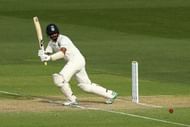
Virat Kohli finally won a toss in Adelaide, and chose to bat, just as any other captain would have, in those conditions.
However, this turned out to be a reasonable result for Australia. While they may have been forced to face Ashwin when the pitch offered the most for spin, Australia's bowling attack is far more accomplished than their batting line-up, so it gave them the best chance of starting positively.
The pitch in Adelaide also had a bit more life in it than many predicted. While Pujara read the conditions perfectly, India's first four wickets were all from batsmen driving outside their off-stump.
With an untested pitch in Perth, it will be crucial for the side batting first to assess conditions and adapt accordingly.
Despite this, whoever wins the toss will almost certainly want to bat. The weather forecast for Perth suggests temperatures as high as 40 degrees on the opening day. Neither side will want to inflict that on their bowlers, particularly if the pitch turns out to be flat.
Winning the toss and then reading conditions in the first hour of the game will therefore play a significant part in who wins the second Test.
#4 India’s seamers vs Australia’s top order
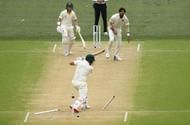
Much was made of India’s pace attack in the build-up to this series, and in Adelaide, they did not disappoint.
Their bowlers shared the wickets around, with each of the four bowlers taking only between one and three wickets in both innings, but all looking threatening at various stages.
Australia’s top order, meanwhile, looked shaky at best. The suspensions of David Warner and Steve Smith in the wake of the ball-tampering incident have unsurprisingly weakened Australia’s batting line-up. But in addition to their suspensions, the scatter-gun selections that have seen Australia’s batting line-up be constantly changed over the past few years, have meant that Australia are also left sorely lacking experience.
This puts added emphasis on the wickets of Usman Khawaja and Shaun Marsh, who with over 30 Tests each are comfortably Australia’s most experienced batsmen.
This is alarming, as neither of the two have been particularly consistent throughout their Test careers.
Khawaja has had a reasonable year, with his match-saving hundred in the United Arab Emirates being one of the few bright spots from Australia's tour. However, as previously mentioned, his trouble with off-spinners could see him struggle against Ashwin throughout the tour.
Marsh's international form has not been good. He averages just 25.27 in 2018, and his 60 in Adelaide was the first time he reached 50 in 13 innings, and the first time he reached double figures in the last six innings.
But Marsh averaged 88.60 in the three Sheffield Shield games he played, and may be buoyed by playing in his home state.
The inexperienced opening pair batting above them, makes the performances of these two particularly crucial.
Aaron Finch's poor form continued in Adelaide, and while Marcus Harris did make starts, his failure to capitalize on these starts was one of the reasons Justin Langer cited, for letting his contract expire when he was Harris's coach for Western Australia.
If the Indian seamers continue to dominate Australia's top order, then it is difficult to see Australia making the runs needed to challenge a far more settled India batting line-up.
#3 India’s Openers
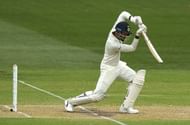
Vijay and Rahul’s 63-run partnership in the visitor’s second innings in Adelaide was a very encouraging sign for India. It was the highest opening stand between the pair, and came at a vital stage in the game.
It does not, however, guarantee that the same pair will be opening in Perth, since both Vijay and Rahul average below 25 in 2018.
Shaw’s fitness will likely determine whether the Indian side remains unchanged, but even if he does not recover from his injury on time, it is possible that Vihari will come into the team. This could mean a straight swap for Rohit Sharma at number six, and would therefore leave the openers unchanged. But there is also the possibility that he will replace Rahul or even Vijay, which will move up Rohit Sharma to one of the opener's slots.
The speculation over the opening position shows that it is not currently India’s strengths. Australia also have the means to exploit this potential weakness. Australia's pace trio of Pat Cummins, Mitchell Starc and Josh Hazlewood is now well-established at Test level.
Starc wasn’t at his best in the first Test, and arguably hasn’t been at his best since the injury he suffered in Sri Lanka in 2016. But Hazlewood, conversely, looked in fine form, dismissing Rahul in both innings.
The Indian openers, whoever they end up to be, therefore have a difficult task ahead of them. However, it should also be noted that if India’s openers do see off the new ball, then they pave the way for a big score. This is because, unlike the Duke ball, the Kookaburra ball is harder to find reverse swing with, and subsequently loses much of its potency after the first few overs.
If India’s openers blunt the new ball, then they set thing up nicely for the likes of Pujara, Kohli and Rahane, enabling them to pose an imposing total for Australia’s fragile batting side.
#2 The Pitch
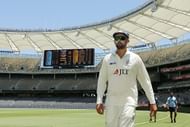
This being the first-ever Test at the Perth Stadium, raises questions over how the pitch will perform.
The one Sheffield Shield game the ground has hosted, was a low-scoring affair between Western Australia and New South Wales. The game took place soon after Australia's Test squad for the first two games was announced, and had the game been played earlier, the squad would likely have been different, since Jhye Richardson's exceptional 8/47 in the first innings would probably have earned him a call-up.
Richardson, a contender for the quickest bowler that Australia has, showed that the pitch can offer pace bowlers some aid. But Nathan Lyon's seven-wicket haul in that match should also not be overlooked.
Australia's coach Justin Langer claims that the ODIs and T20Is played at this venue suggest the pitch will have some pace. But preparations for a five-day game are very different.
Also adding uncertainty over how the pitch will play, is the fact that the Perth Stadium uses a drop-in wicket. These have become commonplace in Australian cricket over the past few years, as they make it easier for the grounds to accommodate the Australian Rules games played in the winter.
However, drop-in pitches have not tended to produce great cricket. While the Adelaide Oval seems to have found a formula with their drop-in pitches that creates fantastic duels between bat and ball, many of the other drop-in pitches have been less successful.
This was seen as far back as India's last tour of Australia, where most of the pitches lacked pace and offered little for the batters. This was also the case in last season's Ashes series. While Australia's pace bowlers performed well, many of the pitches were far slower than what one would expect from an Australian pitch. They also offered little seam, and didn't deteriorate at the same rate as normal pitches, meaning spinners couldn't have a significant impact late in the game.
Australia would certainly be most comfortable with a hard, quick wicket. Added to the fact that it is something their batsmen and pace bowlers are used to, the exceptional ability of Nathan Lyon to exploit bounce would be an advantage. On the other hand, India's pace bowlers would probably enjoy such a pitch themselves. Jaspit Bumrah may particularly thrive on such a wicket, with his pace and skidding action very similar to Jhye Richardson's.
#1 Ashwin vs Australia's left-handers
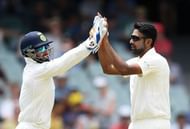
The last time India were in Australia, Ravichandran Ashwin was dropped for the Adelaide Test, with Karn Sharma being selected instead. Since then Karn Sharma has not played another Test, while Ashwin has established himself as one of the best spin bowlers of his generation.
Ashwin's performance in the first Test emphasized this. While his figures were good, having taken three wickets in each innings, Ashwin's performance was even better than the statistics may show, as he tied down one end for the majority of the time.
Ashwin was particularly effective against the left-handers, as he has been for most of his career. Five of Ashwin's six wickets were left-handed batsmen, with him dismissing Usman Khawaja in both innings.
Australia does not lack left handers for Ashwin to bowl at either, with six in their team, and four of them in their top six.
Furthermore, most of Australia's batsmen are generally more confident facing pace bowling, with Peter Handscomb perhaps being the only exception. Usman Khawaja in particular, has struggled with off-spinners throughout his career. While he has improved since his early performances in Test cricket, where Graeme Swann had him wrapped around his finger, Khawaja's two dismissals to Ashwin in Adelaide are ominous.
For Ashwin, it is an ideal scenario, coming up against a team full of left handers who struggle against spin. Conditions may not be as favorable towards the spinners in Perth as they were in Adelaide, but Ashwin has the skill to be effective regardless.
